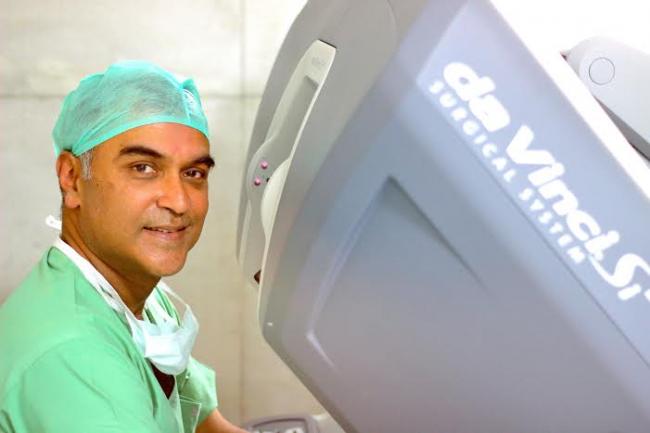26 May 2016, 10:04 am Print

Globally a third of the world’s population are overweight or obese with the United States leading the charge.
Today it is a well recognized fact that obesity is not a mere cosmetic problem, but is the mother of all important diseases, including type 2 diabetes, high blood pressure, ischemic heart disease, sleep apnea, and even some cancers.
“There are over two dozen medical conditions that are associated with obesity,” says Dr Arun Prasad, Robotic Surgeon, Institute of Robotic Surgery at the Delhi-based Indraprastha Apollo Hospitals.
While the ideal situation is to lose weight through physical fitness measures, often the morbidly obese are trapped in a vicious cycle – their legs cannot support their weight inhibiting them from prolonged exercise, which leads to increased weight gain. Take Chandrika Jayna, (name changed) who had severe joint pain in her knees and unable to walk had been gaining increasing weight. This led to a host of complications.
For people like Jayna (name changed) bariatric surgery is a life-enhancing procedure. There was a time when there was a lot of stigma associated with opting for bariatric surgery, but today as well known names go openly under the scalpel to trim their flab, the benefits are becoming acknowledged.
Doctors admit that bariatric procedures should be the last option and only undergone after all other weight loss measures tried, but they also point out that for the super obese it is now an imperative. The good news is that with the advent of Surgical Robots, bariatric procedures are now becoming safer and cutting down healing time.
Depending on the case, there are different surgical procedures that bariatric surgeons use. But the most common one is gastric bypass surgery. Describing it in layman’s terms, Dr Prasad who has done over 1000 bariatric surgeries in the last 12 years, says this surgery makes the stomach smaller and allows food to bypass part of the small intestine.
Earlier doctors were using laparoscopic techniques to perform gastric bypass surgery. Today, robotic surgery is the more preferred method. Robots operate in 360 degree mode and can reach deeper getting to difficult-to-access parts such as the stomach blood vessels easily. Also, with the flexible robotic equipment suturing is far more accurate than with old straight shaped equipment. There is less blood loss and faster recovery besides leaving practically no scars.
“We call ourselves fat fighters,” says Dr Parveen Bhatia, chairman, Institute of Minimal Access Metabolic and Bariatric Surgery, Institute of Robotic Surgery (IRS), Sir Ganga Ram Hospital.
Bhatia rues at the growing obesity in India. “One quarter of what you eat keeps you alive, the other three quarters of what you eat keeps doctors alive,” he says. He distinguishes the super obese as those with BMI more than 50. And “Super super obesity” is defined as those with BMI of more than 60 kg/m2.
According to Dr Arun Prasad, “In cases where the patient is super obese, weighing over 200 kgs, the robot is useful in lifting the stomach. However much we may gym, a half hour long procedure involving lifting of stomach becomes tiring for the doctor.”
Compared to laparoscopic procedures where it takes 3-4 days of hospital stay and over a month long rest period, those undergoing robotic surgeries can go back home in 2 to 3 days and return to normal activities within three weeksor so.
No surgery comes without risks, though these are minimized in the case of robotic procedures. Bariatric surgery does carry some risks as most of the patients undergoing these have co-morbid conditions like diabetes, hypertension and sleep apnea adding to the complexity. Post operation, one possible risk is of nutritional deficiency. Iron and vitamin B12 deficiency can occur leading to anaemia. However, these can be handled during periodic follow-up consultations.
But increasingly benefits are outweighing the risks. Rarely is weight regained. Most people continue to lose weight for a good 12 months after the procedure before settling down to an optimum weight. Ravi Narayan has lost 35 kgs in six months after surgery.
India today has just 190 trained robotic surgeons who conducted nearly 4000 in 30 hospitals spread across during 2015. Bulk of these procedures related to Urology, Gynaecology, Thoracic, and Head and Neck and General Surgery areas.
PS: Names of patients changed to protect privacy.
- Cambodian authorities extradite 130 Chinese nationals for cybercrime, online fraud
- US vetoes Palestine's UN full membership request
- Assembly President calls for massive investment in sustainable infrastructure
- UN chief Antonio Guterres appeals for maximum restraint in the Middle East
- Israeli missile hits Iran as tension escalates in Middle East: Report






